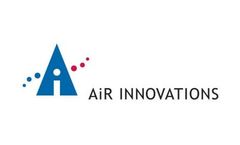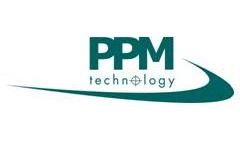Refine by
Hospital Environment Articles & Analysis
11 articles found
Maintaining sterile storage conditions is necessary to protect medical instruments, drugs, surgical implants, and other equipment from contaminants. ARON guidelines on sterilization are straightforward: temperatures should not exceed 72°F (22°C) to 78°F (26°C), relative humidity should not exceed 60%, and airflow should be positive pressure with at least four total air changes per ...
Over the past two decades, there has been a substantial increase in the usage of latex products, accompanied by a growing incidence of latex allergies, particularly in healthcare settings. Allergic reactions to latex can range from mild to severe, and even be fatal in some cases. Latex allergy symptoms include skin irritation, runny nose, rash, and difficulty breathing. This issue is especially ...
As a full, vendor neutral solution, it is accessible in any care location and integrates with existing ultrasound systems and hospital IT infrastructure. The combination of components of Ultromics’ echocardiography solution to help drive clinical benefits include: Exceptional precision in the detection of HFpEF, with high accuracy using only a single apical four-chamber ...
As such, environmental control in hospitals is important because disease transmission from the aerosol or airborne infection is possible. ...
ByUbiBot
When it comes to quality management in the hospitality industry, the only rule to win is consistently delivering the highest quality services to the customer. And maintaining the service quality helps gain a competitive advantage over others in the industry. If you want to maintain consistent excellent services, you must understand the hospitality quality’s critical components and train ...
New air filtration and UV lighting devices can help reduce COVID-19 risk in schools and other indoor public spaces AMPOL, a Louisiana-based environmental cleanup and decontamination company, has created new devices that use two technologies to eliminate and sterilize nearly all air particles. The devices are now available in Louisiana to keep schools and other public spaces safe. The devices ...
ByAMPOL
For the LowEx system, the measured energy use for heating was 11-27% lower and for cooling 32-73% lower than for the conventional system.Keywords: hospital environment, individualised climate, low exergy systems, heating systems, cooling systems, thermal comfort, human body, exergy balance, individualisation, personal space, hospitals, healthcare ...
In this review the author is focusing on hospital wastes management, the condition of waste segregation, the types of wastes treatments and solving the identified problems were suggested. Hospital wastes nature “Hospital wastes” refers to all wastes, biological or non biological from hospitals, that is discarded and ...
Both Formaldehyde and Glutaraldehyde are found in the hospital environment at higher concentrations than those to which the general population is exposed. Their possible adverse health effects are therefore very important to those working in certain parts of hospitals and to patients whose health status may be compromised. Both compounds are ...
Recent enhancements to food safety and blood safety systems, along with safeguards against transmission of Creutzfeldt-Jakob disease (including vCJD) in hospital environments, will help to prevent the occurrence of vCJD in Belgium.Keywords: bovine spongiform encephalopathy, BSE, variant Creutzfeldt-Jakob disease, vCJD, Belgium, risk management, mad cow disease, ...
We examined the effects of air mass types on hospital admissions due to respiratory and cardiovascular diseases, in Athens, Greece for 1992-2000. Health data were analysed according to the sex and age group of the patients admitted to the hospital. It was found that increased hospital admissions were associated with very poor ventilation for the ...


![[App Note] Airborne latex allergens control in hospital environments with Coriolis [App Note] Airborne latex allergens control in hospital environments with Coriolis](https://d32zuqhgcrpxli.cloudfront.net/eyJidWNrZXQiOiJlZS1maWxlcyIsImtleSI6ImZpbGVzLzUzNTExL2FydGljbGVzLzExMTAyMjQvNTM1MTFfNl8yMDIzMDUyNTA1MTgzODk0OTk0OTdfcmF3LmpwZyIsImVkaXRzIjp7InJlc2l6ZSI6eyJmaXQiOiJjb250YWluIiwiYmFja2dyb3VuZCI6eyJyIjoyNTUsImciOjI1NSwiYiI6MjU1LCJhbHBoYSI6MX0sIndpZHRoIjoyNDAsImhlaWdodCI6MTQ1fX19)






